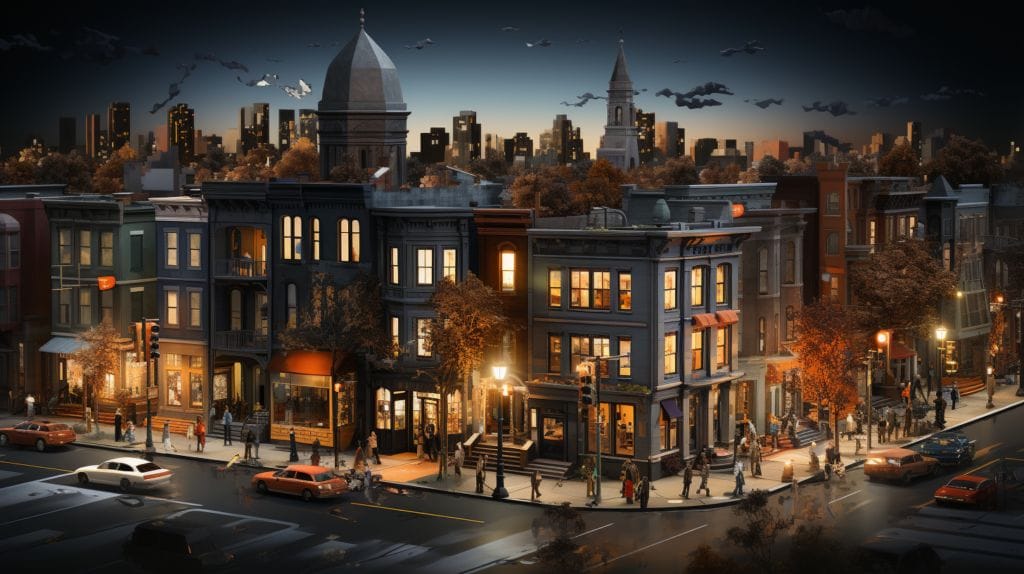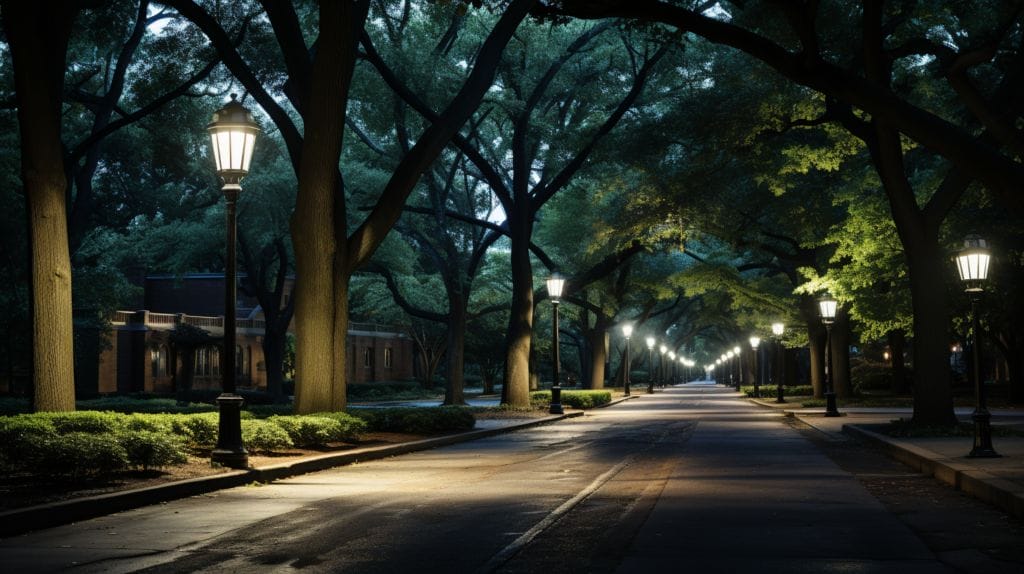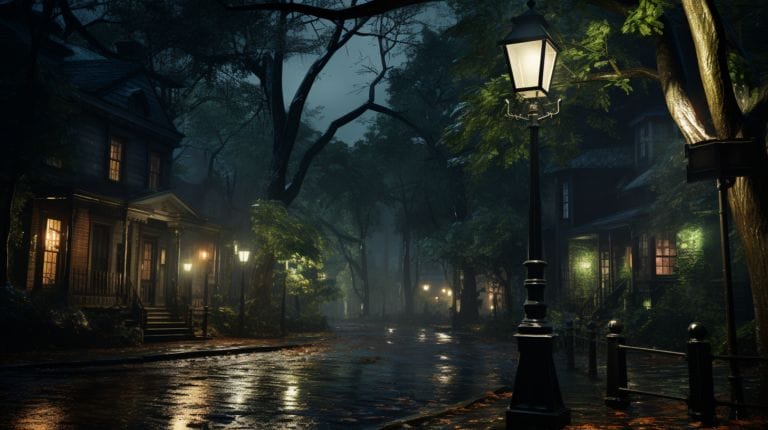Height of Light Pole: The Guide to Proper Street Lighting
Just like the lighthouse is a beacon for lost ships at sea, well-lit streets are the beacons for our urban jungles. We often overlook a simple truth: the height of a light pole plays a pivotal role in providing sufficient illumination for our streets.
This seemingly mundane variable impacts visibility, safety, and even the aesthetics of our neighborhoods. But how do we determine the optimal height for these guardians of the night? What factors do we need to consider, and what impacts will these decisions have on our roads and communities?
In our ‘Height of Light Pole’ guide, we will explore these questions and more, shedding light on a subject that affects us all, yet is rarely given a second thought.
Key Takeaways
- The height of the light pole, often measured in meters, plays a decisive role in defining the extent of illumination in a certain area.
- A higher pole allows for wider light distribution, illuminating a larger space with fewer poles.
- Careful balance between pole height and distance is important to avoid areas of darkness or overly bright spots.
- Choosing the right lamp for the light pole is essential for optimizing energy efficiency and effectiveness of street lighting.
Exploring the Fundamentals of Lighting and Light Pole Height

The height of the light pole is a key factor in the science of lighting. It impacts how far and wide a given area is illuminated. The higher the pole, the broader the light distribution. This means a single pole can illuminate a larger area, reducing the number of poles required, thus saving resources and reducing clutter.
However, height and distance between poles must be carefully balanced to avoid creating areas of darkness or overly bright spots, which can be just as hazardous. A well-lit environment enhances safety by reducing hiding spots for potential criminals, minimizing the risk of accidents, and increasing visibility for pedestrians and drivers alike.
Innovative approaches that maximize visibility while minimizing energy use are critical, especially considering the light distribution of the light fixtures and the height of the lighting poles. Techniques such as the use of energy-efficient bulbs, smart sensors, and adaptive lighting systems can all be incorporated to ensure optimal lighting conditions.
Understanding the Role of Street Light Poles in Road Lighting

Building on the importance of light pole height, let’s now focus on the crucial role that street light poles play in road lighting design. Understanding this role is foundational in making informed decisions for a safe and efficient lighting system.
In creating effective road lighting, we must consider:
- Height of the Pole: A higher pole will cast light over a larger area, but might not provide sufficient illumination at ground level. Conversely, a lower pole will light the immediate area intensely but will cover less ground.
- Distance Between the Poles: The distance should be proportional to the height. The greater the pole height, the wider the distance could be.
- Lighting Poles on Both Sides: For broad roads, arranging lighting poles on both sides can improve visibility and aesthetics significantly. However, it must be done strategically to avoid creating areas of over-illumination or shadow.
- Pole Height and Distance: Finding the right balance between pole height and distance is key to ensuring even illumination.
The Process to Determine the Spacing and Height of Light Poles

Determining the spacing and height of light poles involves mathematical methodologies, adherence to local regulations, and the use of modern lighting design software. This delicate balance ensures that our street lighting is effective and compliant with safety standards.
We begin with mathematical methodologies, considering factors such as pole height, light source intensity, and desired ground-level illumination. These calculations help determine optimal light pole spacing and height for maximum coverage and visibility, considering the distribution of the light fixture. Different areas have varying requirements for street lighting, affecting both light pole height and spacing.
Modern lighting design software has revolutionized this process. We can simulate different configurations, adjusting height and spacing until we achieve optimal lighting conditions. These tools also allow for quicker adjustments and revisions, leading to more efficient design processes related to the height of the lighting pole to be used.
Case Study: Solar Street Lights and the Influence of Pole Height

Solar street lights represent a leap forward in energy efficiency and sustainability. Their effectiveness is closely tied to the height of the light pole.
- Sunlight Exposure: The higher the pole, the less likely the solar panels are to be shaded, enhancing their ability to charge during the day.
- Light Dispersal: A higher pole allows the light to disperse over a wider area, improving street lighting quality.
- Vandalism and Damage: Higher poles minimize the risk of vandalism or accidental damage to the solar panels and light fixtures.
- Aesthetics: Pole height can impact the visual appeal of a street or public space. While this may seem less important, it plays a role in public acceptance of solar street lights.
How Does Proper Street Lighting Impact Lumen and Footcandle Measures?
Proper street lighting plays a crucial role in the lumen to footcandle conversion. Brighter lights with higher lumen ratings can produce more footcandles, ensuring better visibility and safety for pedestrians and drivers. Adequate street lighting also contributes to reduced crime rates and improved overall quality of life in urban areas.
Practical Tips for Choosing the Right Lamp for Your Light Pole

Choosing the right lamp for your light pole significantly affects both the efficiency and effectiveness of street lighting. The interaction between lamp type and pole height is key.
Consider the implications of LED lamps on pole height and spacing. These lamps are energy-efficient and produce bright, direct light. Therefore, when using LED lamps, we can opt for higher light poles and wider spacing without compromising light coverage, reducing installation costs.
Evaluate the lighting environment before choosing the right lamp. It’s not just about brightness; it’s also about the quality and direction of light. For example, in a densely populated urban area with towering structures, a lamp with robust light output and a wide beam angle is required, often placed on lighting poles used on both sides of the road.
On the contrary, in a suburban setting, lighting poles are used with a moderate light output and a narrower beam angle would be deemed more appropriate.
Conclusion
So, we’ve journeyed through the world of street lighting, dissected the role of light pole height, and delved into the process of determining spacing and height.
We’ve even taken a look at solar street lights and offered practical tips for choosing lamps.
We hope this guide illuminates your understanding of proper street lighting, helping you to make informed decisions when it comes to road safety and visibility.
Frequently Asked Questions
What is the importance of the height of a light pole in street lighting?
The height of a light pole is crucial for proper street lighting as it determines the spread and intensity of light across the area to be illuminated. It also plays a significant role in ensuring adequate visibility and safety for pedestrians and motorists.
How is the spacing of street lighting poles determined?
The spacing of street lighting poles is determined based on factors such as the width of the road, total light output and light distribution required, and the density of the area to be illuminated. Additionally, considerations may be made for traffic density and crime rate in the area.
What are the ideal characteristics for the distribution of light from a lighting pole?
The distribution of light from a lighting pole should be even and balanced, ensuring that the entire area illuminated by the lighting fixture receives adequate light without creating glare or dark spots. It should be tailored to the specific requirements of the street or area being lit.
How does the width of the road impact the selection of lighting poles?
The width of the road is a crucial factor in determining the type and placement of lighting poles. Wider streets may require taller poles with higher light output, while narrower streets may necessitate shorter poles placed at more frequent intervals to ensure adequate illumination.
What factors are considered when choosing the type of light for outdoor lighting?
When selecting the type of light for outdoor lighting, factors such as the speed limit on the road, the distance between poles, and the specific requirements of the area to be illuminated are taken into account. Additionally, considerations are made to minimize glare and ensure uniform light distribution.







